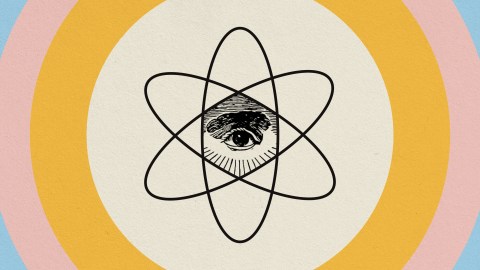Science claims a “god’s-eye view” of reality. This is fiction

- Perspective plays a pivotal role in our comprehension of science and reality, as illustrated by the distinction between first-person and third-person viewpoints in video games.
- Science predominantly operates from the third-person perspective. However, this is not reflective of actual human experiences.
- A critical misunderstanding arises when abstract concepts from this “god’s-eye view” are regarded as more real than our immediate, personal experiences, a mistake known as the fallacy of misplaced concreteness.
I play a lot of video games. When signing on to a new one, the most important feature I look for is the perspective through which I will be controlling the character. Some games operate in first-person view, such as a first-person-shooter. In that kind of game, I know I will be looking out through the character’s eyes as I fire laser bolts at aliens or other foes.
The second option is the third-person perspective. This view is disembodied. It hovers back, looking over the character’s shoulder. In this kind of game, I see the character’s whole body as they run, shoot, and otherwise interact with their world.
I am telling you this not because I want you to play video games (although I do). I am telling you this because this question of perspective is critical to thinking about science and reality. Physics works strictly from the third-person perspective. While that is part of what drew me to this branch of science, I have come to believe that it can be a real problem if you are not careful.
A god’s-eye view of the world
I went into physics because I wanted to understand the world at its deepest levels. I wanted to know about ultimate reality and gain a view of the cosmos that had nothing to do with the concerns of human beings. As a teenager, learning about Newtonian dynamics and relativity convinced me that physics offered exactly what I was looking for. After all, Einstein himself said, “I want to know His [God’s] thoughts; the rest are just details.”
That god’s-eye view of the world I was hoping for is a fully third-person view. It is a perfectly objective perspective on a perfectly objective reality existing without reference to life or human experience. It is a view of the world you can take if you imagine yourself floating from an imaginary, disembodied viewpoint in space.
The most important thing to know about that viewpoint is that it does not exist. In reality, there is no such thing as the third-person view.
Embodiment is a central concept here. If you want to think about what is real, you cannot sidestep the fact that for us, reality is experience. There is no other way we encounter existence except as situated, embodied experiencers, embedded in the reality of life. This is something philosophers like Evan Thompson have been pointing out for years.
Sure, you can imagine what a view outside your body would look like, as if you were flying a drone around yourself and looking through the eyes of its camera. You also can think and reason about the world independent of you. But all such imagining, thinking, and reasoning comes downstream of the inescapable fact of embodied experience. The disembodied view is a view from nowhere, as philosopher Thomas Nagel put it. It is a view and an experience that no one ever has or ever will have.
The limits of science’s disembodied view
Why does this fact of irreducible, embodied first-person perspective matter? Because no human inquiry about the world can escape it. In other words, science cannot escape it.
Through science, we found a new way to interrogate the world. That remarkable method gave us answers we could all agree on, and this is what is meant by science being objective. Developing the imagined third-person perspective was a necessary step to developing the methods of science. That disembodied view was hard-won, and it allowed people like the medieval Mertonians to move beyond first-person experience and start defining precise mathematical expressions for quantities associated with motion. The method grew as scientists learned how to specify experimental procedures and extract data that could be applied to theoretical models. In this way, the third-person view was a great idea. It gave us new ways to develop objective descriptions of the world that gave insights into how and why it worked the way it did.
The problem emerges when the reliance on abstraction in science leads us to forget where this third-person perspective came from in the first place. The mathematician and philosopher Alfred North Whitehead saw this problem clearly more than a century ago when he wrote of the “fallacy of misplaced concreteness.” This occurs when we come to think the abstract entities of science’s third-person view (think of a temperature expressed in degrees Celsius) are more real than concrete first-person experience (the bodily feeling of hot or cold). Science’s abstractions are powerful, and they need to be accounted for, as Whitehead knew. But there is not a hierarchy where these abstractions are the pinnacle, and your experience is just an illusion, looking on from below.
The third-person perspective is a powerful tool. It is a useful fiction, but it is not the world that life inhabits. For me this does not diminish what science and physics have accomplished. Instead, it points to even more potent mysteries to explore. I am part of a group working on semantic information, and I do believe this might be one way to understand how agency and autonomy arise in physical systems. Such an understanding would help reveal how science and physics emerge from our first-person experience in all its grandeur, nuance, and wonder.





